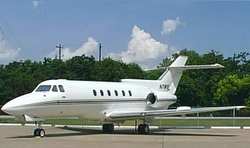Wed, Mar 16, 2011
Cites Captain's Decision To Attempt A Go-Around Late In The
Landing Roll With Insufficient Runway Remaining
The NTSB determined Tuesday that the probable cause of the 2008
plane crash at Owatonna Degner Regional Airport, (KOWA) in
Owatonna, Minnesota, was the captain's decision to attempt a
go-around late in the landing roll with insufficient runway
remaining. Contributing to the accident were the pilots' poor crew
coordination and lack of cockpit discipline; fatigue, which likely
impaired both pilots' performance; and the failure of the FAA to
require crew resource management training and standard operating
procedures for Part 135 operators.

"This accident serves as a reminder that aviation is an
unforgiving environment; no detail is too small to be overlooked -
not the winds, or the communication between crew members, or even
how much sleep they get," said NTSB Chairman Deborah A.P. Hersman.
"The small things do matter and in this case they accumulated to
result in tragedy."
On July 31, 2008, East Coast Jets flight 81, a Hawker Beechcraft
Corporation 125-800A, crashed while attempting a go-around after
touchdown and during the landing rollout at Owatonna Degner
Regional Airport. The flight was a nonscheduled passenger flight.
An instrument flight rules flight plan had been filed and
activated; however, it was cancelled before the landing. Visual
meteorological conditions prevailed at the time of the accident.
The two pilots and six passengers were killed.

NTSB Chair Hersman
The safety issues addressed in this investigations are: the
flight crew actions; pilot fatigue and sleep disorders; the lack of
Part 135 Standard Operating Procedures, including crew resource
management training and check list usage; go-around guidance for
turbine-powered aircraft; Part 135
preflight weather briefings; inadequate arrival landing distance
assessment guidance and requirements; Part 135 on-demand, pilot-in
command line checks; and cockpit image recording systems.

File Photo
As a result of this accident investigation, the NTSB issued
recommendations to the FAA regarding training, Standard Operating
Procedures, and sleep disorders. Those recommendations include:
- Require manufacturers of newly certificated and in-service
turbine-powered aircraft to incorporate in their Aircraft Flight
Manuals a committed-to-stop point in the landing sequence (for
example, in the case of the Hawker Beechcraft 125-800A airplane,
once lift dump is deployed) beyond which a go-around should not be
attempted.
- Require 14 Code of Federal Regulations Part 121, 135, and 91
subpart K operators and Part 142 training schools to incorporate
the information from the revised manufacturers’ Aircraft
Flight Manuals asked for in Safety Recommendation [1] into their
manuals and training.
- Require 14 Code of Federal Regulations Part 135 and 91 subpart
K operators to establish, and ensure that their pilots adhere to,
standard operating procedures.
- Require principal operations inspectors of 14 Code of Federal
Regulations Part 135 and 91 subpart K operators to ensure that
pilots use the same checklists in operations that they used during
training for normal, abnormal, and emergency conditions.
- Require manufacturers and 14 Code of Federal Regulations Part
121, 135, and 91 subpart K operators to design new, or revise
existing, checklists to require pilots to clearly call out and
respond with the actual flap position, rather than just stating,
“set” or “as required.”
- Work with the National Weather Service to revise Advisory
Circular 00-24B, “Thunderstorms,” by including
explanations of the terms used to describe severe thunderstorms,
such as “bow echo,” “derecho,” and
“mesoscale convective system.”
- Revise regulations and policies to permit appropriate use of
prescription sleep medications by pilots under medical supervision
for insomnia.
- Require 14 Code of Federal Regulations Part 135 and 91 subpart
K pilots to receive initial and recurrent education and training on
factors that create fatigue in flight operations, fatigue signs and
symptoms, and effective strategies to manage fatigue and
performance during operations.
- Review the policy standards for all common sleep-related
conditions, including insomnia, and revise them in accordance with
current scientific evidence to establish standards under which
pilots can be effectively treated for common sleep disorders while
retaining their medical certification.
- Increase the education and training of physicians and pilots on
common sleep disorders, including insomnia, emphasizing the need
for aeromedically appropriate evaluation, intervention, and
monitoring for sleep-related conditions.
- Actively pursue with aircraft and avionics manufacturers the
development of technology to reduce or prevent runway excursions
and, once it becomes available, require that the technology be
installed.
- Inform operators of airplanes that have wet runway landing
distance data based on the British Civil Air Regulations Reference
Wet Hard Surface or Advisory Material Joint 25X1591 that the data
contained in the Aircraft Flight Manuals (and/or performance
supplemental materials) may underestimate the landing distance
required to land on wet, ungrooved runways and work with industry
to provide guidance to these operators on how to conduct landing
distance assessments when landing on such runways.
- Require that 14 Code of Federal Regulations Part 135
pilot-in-command line checks be conducted independently from other
required checks and be conducted on flights that truly represent
typical revenue operations, including a portion of cruise flight,
to ensure that thorough and complete line checks, during which
pilots demonstrate their ability to manage weather information,
checklist execution, sterile cockpit adherence, and other variables
that might affect revenue flights, are conducted.
- Require Part 121, 135, and 91 subpart K operators to ensure
that terrain awareness and warning system-equipped aircraft in
their fleet have the current terrain database installed.
More News
Aero Linx: International Flying Farmers IFF is a not-for-profit organization started in 1944 by farmers who were also private pilots. We have members all across the United States a>[...]
From 2017 (YouTube Version): Remembrances Of An Israeli Air Force Test Pilot Early in 2016, ANN contributor Maxine Scheer traveled to Israel, where she had the opportunity to sit d>[...]
"We renegotiated what our debt restructuring is on a lot of our debts, mostly with the family. Those debts are going to be converted into equity..." Source: Excerpts from a short v>[...]
Also: B-29 Superfortress Reunion, FAA Wants Controllers, Spirit Airlines Pulls Back, Gogo Galileo Van's Aircraft posted a short video recapping the goings-on around their reorganiz>[...]
Chart Supplement US A flight information publication designed for use with appropriate IFR or VFR charts which contains data on all airports, seaplane bases, and heliports open to >[...]
 ANN's Daily Aero-Linx (04.15.24)
ANN's Daily Aero-Linx (04.15.24) Classic Aero-TV: 'No Other Options' -- The Israeli Air Force's Danny Shapira
Classic Aero-TV: 'No Other Options' -- The Israeli Air Force's Danny Shapira Aero-News: Quote of the Day (04.15.24)
Aero-News: Quote of the Day (04.15.24) Airborne 04.16.24: RV Update, Affordable Flying Expo, Diamond Lil
Airborne 04.16.24: RV Update, Affordable Flying Expo, Diamond Lil ANN's Daily Aero-Term (04.16.24): Chart Supplement US
ANN's Daily Aero-Term (04.16.24): Chart Supplement US





